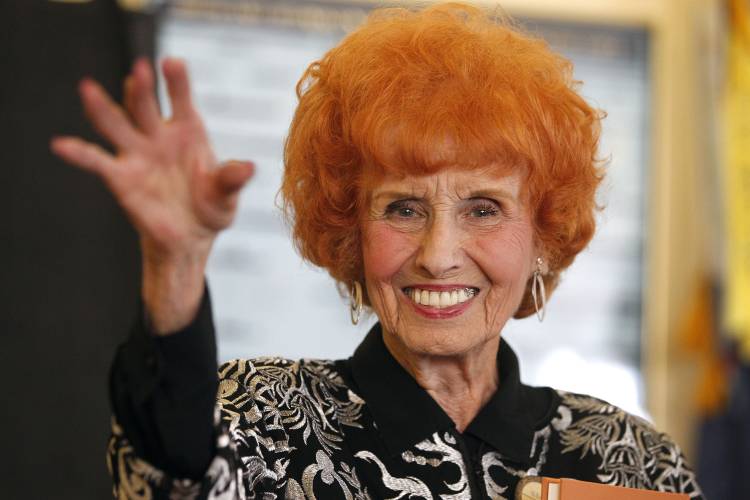Born on October 21, 1919, Elinor Otto emerged from the crucible of the Great Depression, a time that demanded unwavering resolve. Her journey into the realm of iconic figures began during World War II when she joined the workforce in support of the war effort. It was during this era that Elinor became an integral part of the aviation industry, carving out a niche that would solidify her place in history.
Elinor Otto stepped into the male-dominated world of aircraft manufacturing, a field previously deemed unsuitable for women. She became one of the original “Rosie the Riveters,” a group of women who took on industrial jobs traditionally held by men, contributing significantly to the war machinery. Her role as a riveter at the Rohr Aircraft Corporation in Chula Vista, California, marked the genesis of her groundbreaking career.
Riveting planes might have seemed an unlikely vocation for a young woman at that time, but Elinor’s spirit soared above societal norms and expectations. Her dedication and skill were quickly recognized, and she became an embodiment of the iconic “Rosie” figure, symbolizing the strength and capabilities of women in the workforce.
After the war, Elinor Otto’s passion for aviation endured. She transitioned seamlessly through the evolving landscape of the aircraft industry, spanning an astonishing seven decades. Her unparalleled commitment led her to work on numerous historic aircraft, including the B-17, B-29, and the B-52.
But it was her tenure at Boeing that etched her name indelibly in the history books. Elinor Otto became the epitome of dedication, having played an instrumental role in the assembly of the Boeing C-17 Globemaster III, an aircraft vital to military operations and humanitarian missions worldwide. Her tireless work ethic, precision, and expertise were lauded, earning her the title of the “Last Rosie the Riveter.”
Beyond her professional achievements, Elinor Otto’s legacy embodies resilience, perseverance, and the spirit of breaking barriers. Her story resonates as a beacon of empowerment for women, encouraging them to pursue their aspirations despite facing adversity.
Even in her later years, Elinor remained an inspiration, advocating for women’s involvement in STEM fields and sharing her experiences to motivate future generations. Her unwavering dedication to her craft and the aviation industry is a testament to the power of passion and determination in shaping one’s destiny.
Conclusion
Elinor Otto’s passing in 2019 marked the end of an era, but her legacy continues to soar, leaving an indelible imprint on the hearts and minds of those inspired by her remarkable journey. Her life stands as a testament to the heights one can achieve through resilience, passion, and an unyielding spirit, forever earning her a revered place in history as a true American pioneer.




